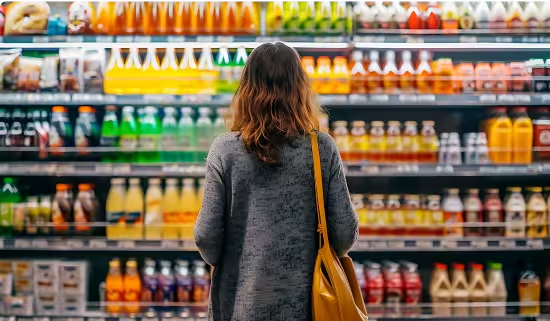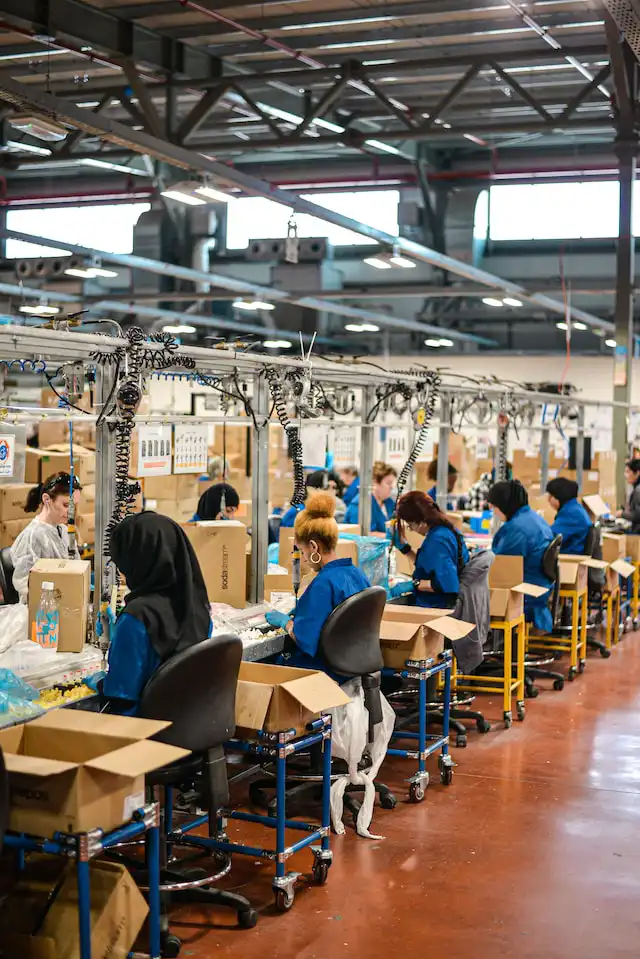
India POS Scan and Go Market Outlook to 2030
Customer Journey and Business Side Penetration and Operational Business Model
Region:Asia
Product Code:KR713
October 2018
136
About the Report

Current scenario in India PoS Scan and Go Market
Age of the Consumer: The population in the age group of 15-64 years is likely to form the potential customer base for self-checkout technology in Indian market. The younger population would be much more open to try out the new technology as they happen to be fast learners and early adopters.
Technology Adaptability of Consumer: Indian customers have entered an era of extraordinary technological pervasiveness and are driven by increasing internet penetration, rising smart phone usage and growing social media presence in the country. The rising smart phone usage and penetration implies that the self-checkout technology will be definitely tried and tested by a sizeable set of target audience, when it will be launched in retail and other end users on a mainstream level.
Income of Consumer: Self-checkout technology will be used by those customers who have a smart phone and also have higher internet accessibility. These customers generally fall in the middle, upper middle and high income groups.
Location of Consumer: Demand for PoS Scan and Go will be present largely in Tier 1 cities with a limited potential in Tier 2 and 3 cities. People in tier 1 cities are generally more tech-savvy than the other cities and hence these consumers are highly likely to shop and make payments digitally through the Scan and Go application.
Retail Sector: The retail industry in India consists of multiple departmental stores, supermarkets, hypermarkets, convenience stores, specialty stores and cash and carry stores. Self-checkout is rapidly attracting customer attention and is quickly becoming a trusted method of checkouts internationally; how-ever it is yet to become popular in a developing country such as India.
Office Cafeterias: This basically includes cafes and food outlets present within a particular office space or multiple co-working areas. Scan and Go technology in office space can help in reducing the waiting time in cafeterias by making the payment process faster when compared to the traditional system of placing order on the spot.
Restaurants / QSRs / Cafes: This includes stand-alone restaurants, Quick Service Restaurants (QSRs), take-away food joints and cafes within India. The above mentioned entities can increase the convenience offered to their customers by allowing them to pre-order their food items, thereby reducing the waiting time, especially in rush hours. Most of the restaurants and cafes in this segment already offer pre-order services through their own online apps, telephonic order placing or through their already existing mobile applications or through third party apps.
Airports (Food Courts and Duty Free Areas): This includes duty-free apparel stores, restaurants, cafes, QSRs and other retail formats established within the airport in order to cater to both local as well as foreign tourists. In accordance with the Airports Authority of India (AAI), the country was evaluated with a total of 464 airports and airstrips located across the country, out of which 125 airports are owned by the association and the remaining 339 are non-AAI airports and airstrips. The self checks out apps have not addressed this market yet.
Electronics Stores: This includes all types of standalone electronics stores, mom and pop stores, departmental stores, supermarkets and hypermarkets which may be brand specific or stores located within shopping malls. The potential for this technology in India is extremely restricted towards electronics stores as majority of the customers would require staff assistance while purchasing any type of electronics products, especially when the product is expensive
Drugstores/Pharmacies: This basically includes standalone drugstores and pharmacies, community/clinical pharmacies and retail pharmacies as well as those located within malls. The list of actions for this technology is fairly limited in this case as majority of the products at these stores are medicines that cannot be bought without a prescription.
Entertainment Centers: This includes entertainment centers such as theatres, cinemas, concerts, amusement parks, trade fairs, exhibitions and sport stadiums. The use of Scan and Go apps in the entertainment centers is extremely limited. As most of the tickets are purchased online way before the show/match, the opportunity to use Scan and Go is negligible.
Competition Scenario in India PoS Scan and Go Market
India PoS Scan and Pay Market Future Outlook and Projections
Whereas, the growth of PoS Scan and Pay technology in dine-in restaurants, QSRs, food joints sector may be extremely limited and restrained due to the presence of apps which are already used in this sector. In addition to that, the technology in the food sector is continuously evolving and more features may be introduced which will further reduce the use for PoS Scan and Go apps. Also, over the long term, restaurants themselves may come up with pre-order services or fast checkout counters which will prevent queues.
Growth in other end users such as office cafes, bookstores and stationary stores, airports (food courts and duty free area), electronic stores, drugstores / pharmacies and entertainment centers are also projected to rise in the near future.
Key Topics Covered in the Report
- Executive Summary
- Research Methodology
- India PoS Scan and Go Market
- India PoS Scan and Go Market Potential
- Business Models/Revenue Streams in India PoS Scan and Go Market
- Trends and Developments in India Scan and Go Market
- Issues and challenges in India Scan and Go Market
- Snapshot on Digital Payment system in India
- Regulatory Framework for India Scan and Go Market
- Case Study for Successful Implementation of PoS Scan and Go Technologies
- Evaluation Parameters of Consumers in India Scan and Go Market
- Pain Points faced by End Users in India PoS Scan and Go Market
- Competitive Landscape of India PoS Scan and Go Market
- Company Profiles of Major Players in India PoS Scan and Go Market
- India PoS Scan and Go Market Future Outlook and Projections, 2018-2030E
- Analyst Recommendations
Products
Key Target Audience
- PoS companies
- Scan and Go Technology Companies
- Retail Sectors
- Restaurants, Cafes and QSR
- Bookstore and Stationary Stores
- Electronic Stores
- Drugstores and Pharmacies
- Airports (Food courts and Duty Free shops)
- Entertainment Centers
- Investors
Time Period Captured in the Report
- Current Year: 2017
- Forecast Period: 2018-2030E
lf Checkout App
Companies
Companies Covered
Perpule 1Pay
Zwing
iRetail
SkippQ
Infinia Retail
SIGNCATCH and Axis Bank (Partnership)
Table of Contents
1. Executive Summary
2. Research Methodology
2.1. Market Definitions
2.2. Abbreviations
2.3. Methodology to Determine Market Potential
3. India PoS Scan and Go Market
3.1. Ecosystem of Major Entities
3.2. India PoS Scan and Go Market Overview
3.3. Benefits of Using PoS Scan and Go Technology
3.3.1. Customer Side
3.3.2. Business Side
3.4. Value Chain Analysis in India PoS Scan and Go Market
4. India PoS Scan and Go Market Potential
4.1. Target Audience for PoS Scan and Go Market in India
4.1.1. By Age of Consumers
4.1.2. By Technology Adaptability of Consumers
4.1.3. By Income of Consumers
4.1.4. By Locationof Consumers
4.2. Business Side Potential in India PoS Scan and Go Market
4.2.1. Retail Sector
4.2.2. Office Cafeterias
4.2.3. Restaurants, QSRs and Cafes
4.2.4. Bookstores and Stationary Stores
4.2.5. Airports (Food Courts and Duty Free Area)
4.2.6. Electronics Stores
4.2.7. Drugstores / Pharmacies
4.2.8. Entertainment Centers
5. Business Models/Revenue Streams in India PoS Scan and Go Market
6. Trends and Developments in India PoS Scan and Go Market
7. Issues and Challenges in India PoS Scan and Go Market
8. Snapshot onDigital Payment Landscape in India
8.1. Cost Considerations for Low Transacting Merchants in India
9. Regulatory Framework for India PoS Scan and Go Market
9.1. Digital Payments Cyber Security Regulations
9.2. Regulations to Setup an Online Business Venture in India
9.3. Stand-Up India Scheme
10. Case Study for Successful Implementation of PoS Scan and Go Technologies
10.1. The Coop Group (Passabene) and Scandit
10.2. WataSale-Offering Cashier Less Shopping Experience
11. Evaluation Parameters of Consumers in India PoS Scan and Go Market
12. Pain Points Faced by End Users in India PoS Scan and Go Market
13. Competitive Landscape of India PoS Scan and Go Market
14. Company Profiles of Major Players in India PoS Scan and Go Market
14.1. Perpule 1Pay (Delvit Solutions Private Limited)
14.2. iRetail (Xlogix Technolytics Private Limited)
14.3. Zwing (Roxfortech Infosolution Private Limited)
14.4. Infinia Retail
14.5. SkippQ (AI Magnifi Technologies Private Limited)
15. India PoS Scan and Go Market Outlook and Projections, 2018E – 2030E
15.1. Customer Side Potential, 2018E – 2030E
15.2. Business Side Potential, 2018E– 2030E
16. Analyst Recommendations for India POS Scan and Go Market
Disclaimer Contact UsWhy Buy From Us?

What makes us stand out is that our consultants follows Robust, Refine and Result (RRR) methodology. i.e. Robust for clear definitions, approaches and sanity checking, Refine for differentiating respondents facts and opinions and Result for presenting data with story

We have set a benchmark in the industry by offering our clients with syndicated and customized market research reports featuring coverage of entire market as well as meticulous research and analyst insights.

While we don't replace traditional research, we flip the method upside down. Our dual approach of Top Bottom & Bottom Top ensures quality deliverable by not just verifying company fundamentals but also looking at the sector and macroeconomic factors.

With one step in the future, our research team constantly tries to show you the bigger picture. We help with some of the tough questions you may encounter along the way: How is the industry positioned? Best marketing channel? KPI's of competitors? By aligning every element, we help maximize success.

Our report gives you instant access to the answers and sources that other companies might choose to hide. We elaborate each steps of research methodology we have used and showcase you the sample size to earn your trust.

If you need any support, we are here! We pride ourselves on universe strength, data quality, and quick, friendly, and professional service.















